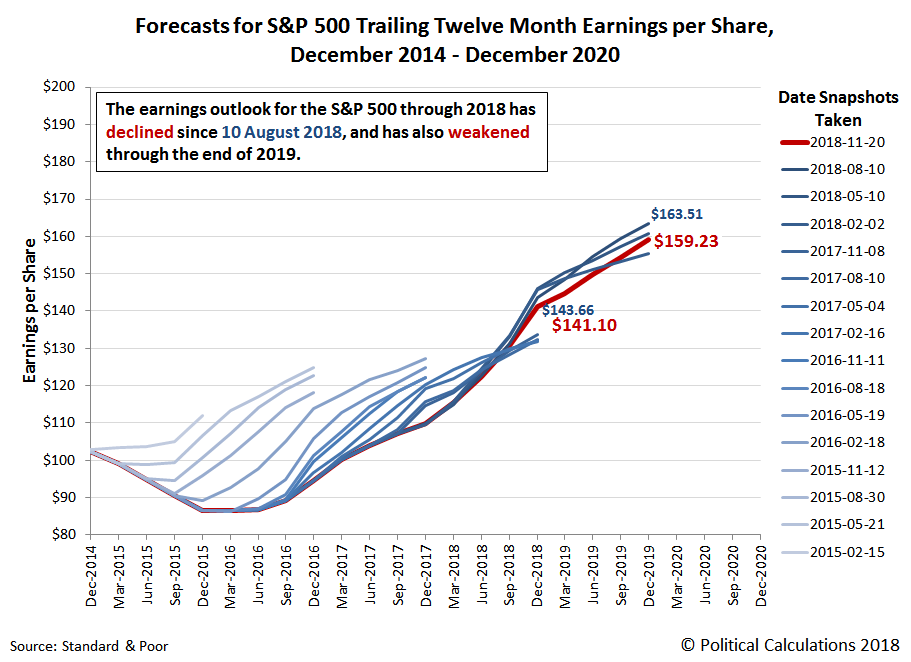Every three months, we take a snapshot of the expectations for future earnings in the S&P 500 at approximately the midpoint of the current quarter, shortly after most U.S. firms have announced their previous quarter's earnings.
The earnings outlook for the S&P 500 has darkened since our previous edition, where as of the snapshot available as of 20 November 2018, we find that the projected future for S&P 500 earnings has softened one again through the end of 2018, and has also weakened through the end of 2019, reversing a strengthening trend that had been forecast just three months earlier.
This quarterly snapshot captures part of the aftermath of the hit that Apple (Nasdaq: AAPL) delivered to the S&P 500 from the recent news that the company was slashing production orders to its suppliers for its latest iPhone models.
Falling oil prices are also contributing to the weakening earnings outlook for the S&P 500, which are part of a broader market pullback in Asia, where many nations have seen their economies significantly weakened in recent months. That growing economic weakness played a role in Apple's production order cuts.
Data Source
Silverblatt, Howard. Standard & Poor. S&P 500 Earnings and Estimates. [Excel Spreadsheet]. 10 November 2018.
Labels: earnings, forecasting, SP 500
Welcome to the blogosphere's toolchest! Here, unlike other blogs dedicated to analyzing current events, we create easy-to-use, simple tools to do the math related to them so you can get in on the action too! If you would like to learn more about these tools, or if you would like to contribute ideas to develop for this blog, please e-mail us at:
ironman at politicalcalculations
Thanks in advance!
Closing values for previous trading day.
This site is primarily powered by:
CSS Validation
RSS Site Feed
JavaScript
The tools on this site are built using JavaScript. If you would like to learn more, one of the best free resources on the web is available at W3Schools.com.
